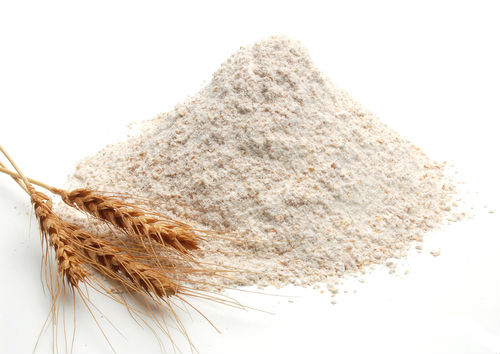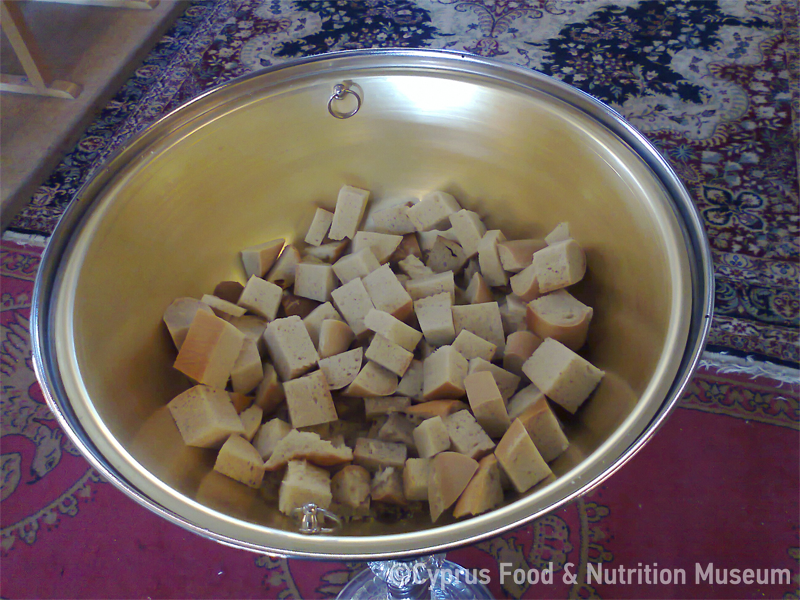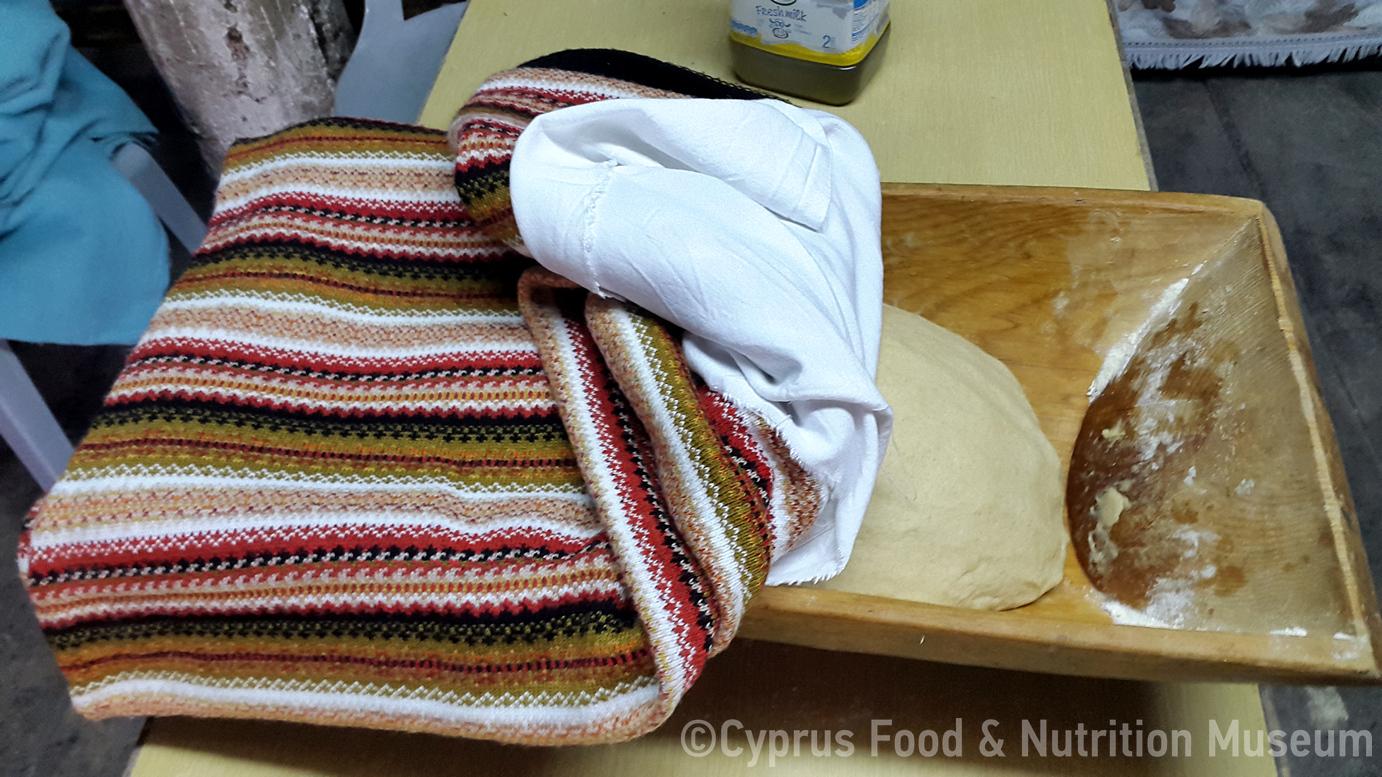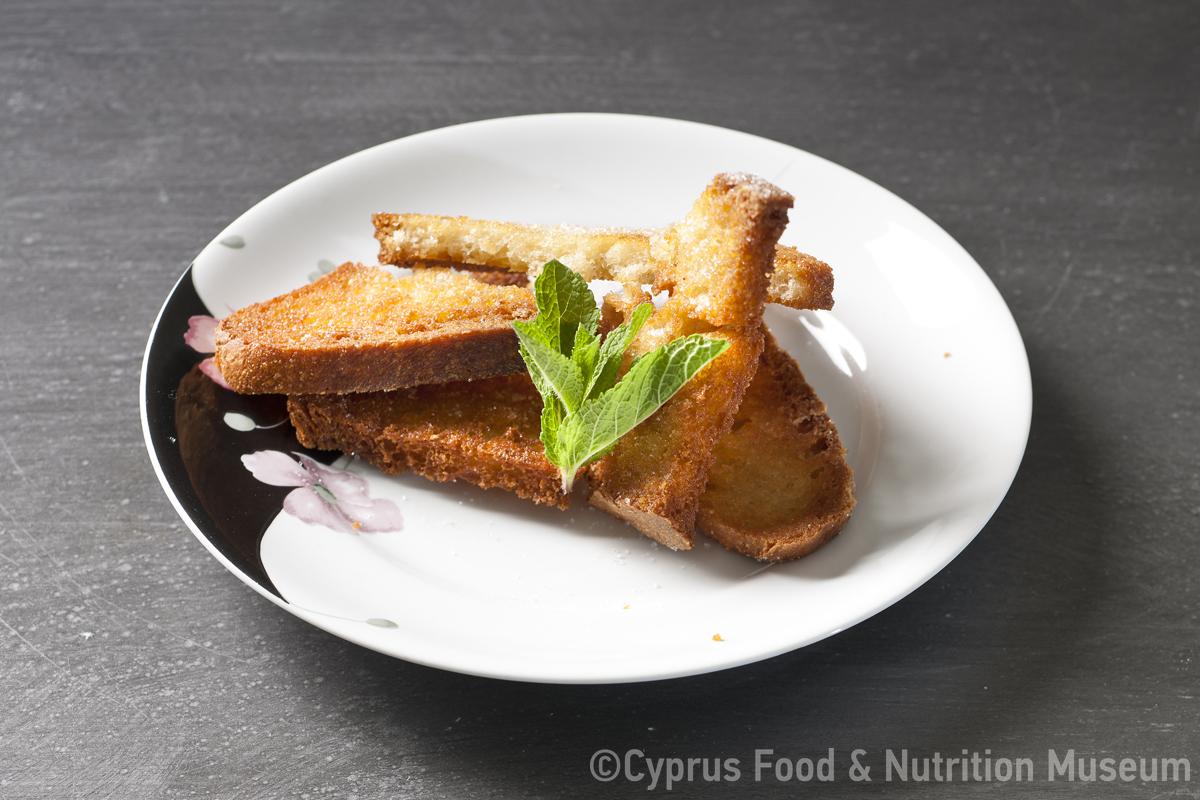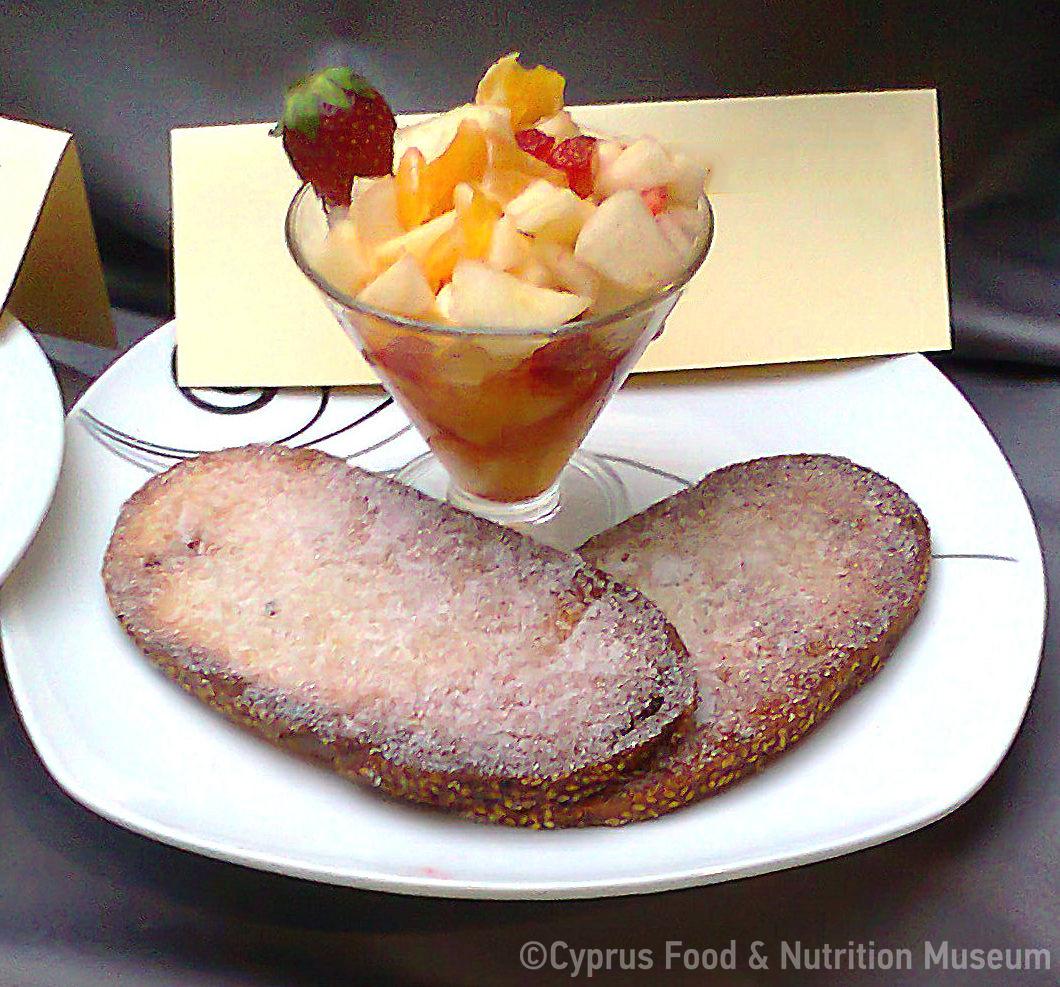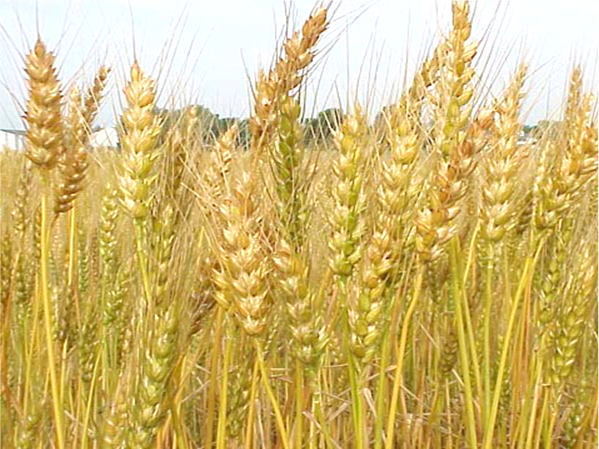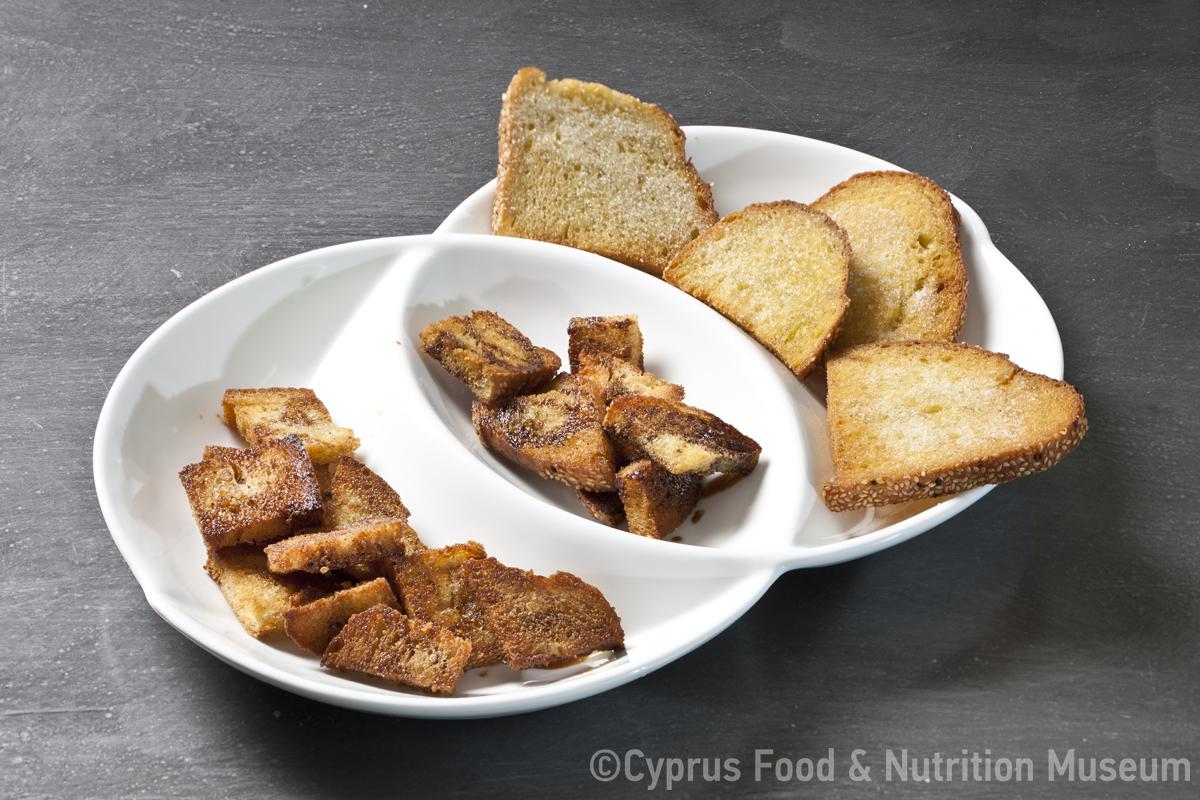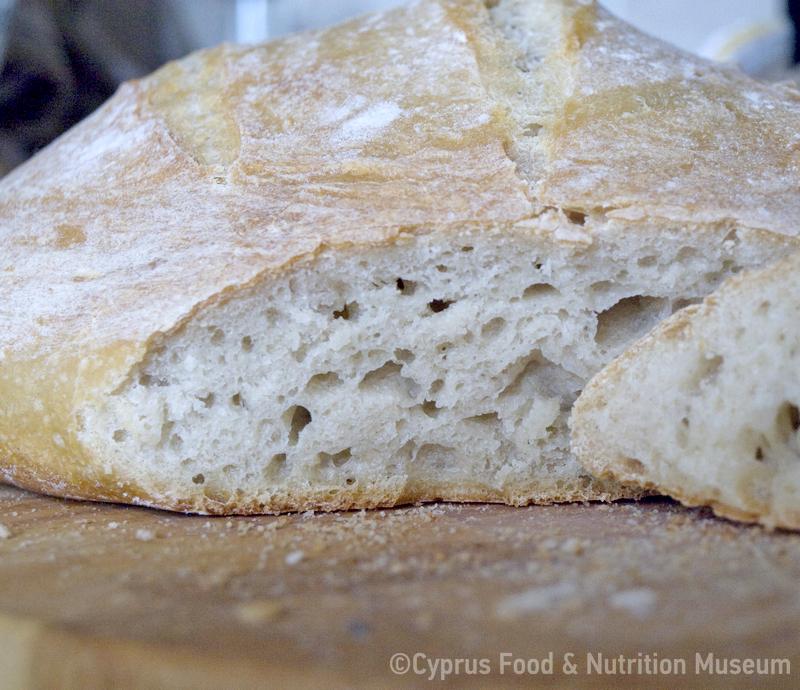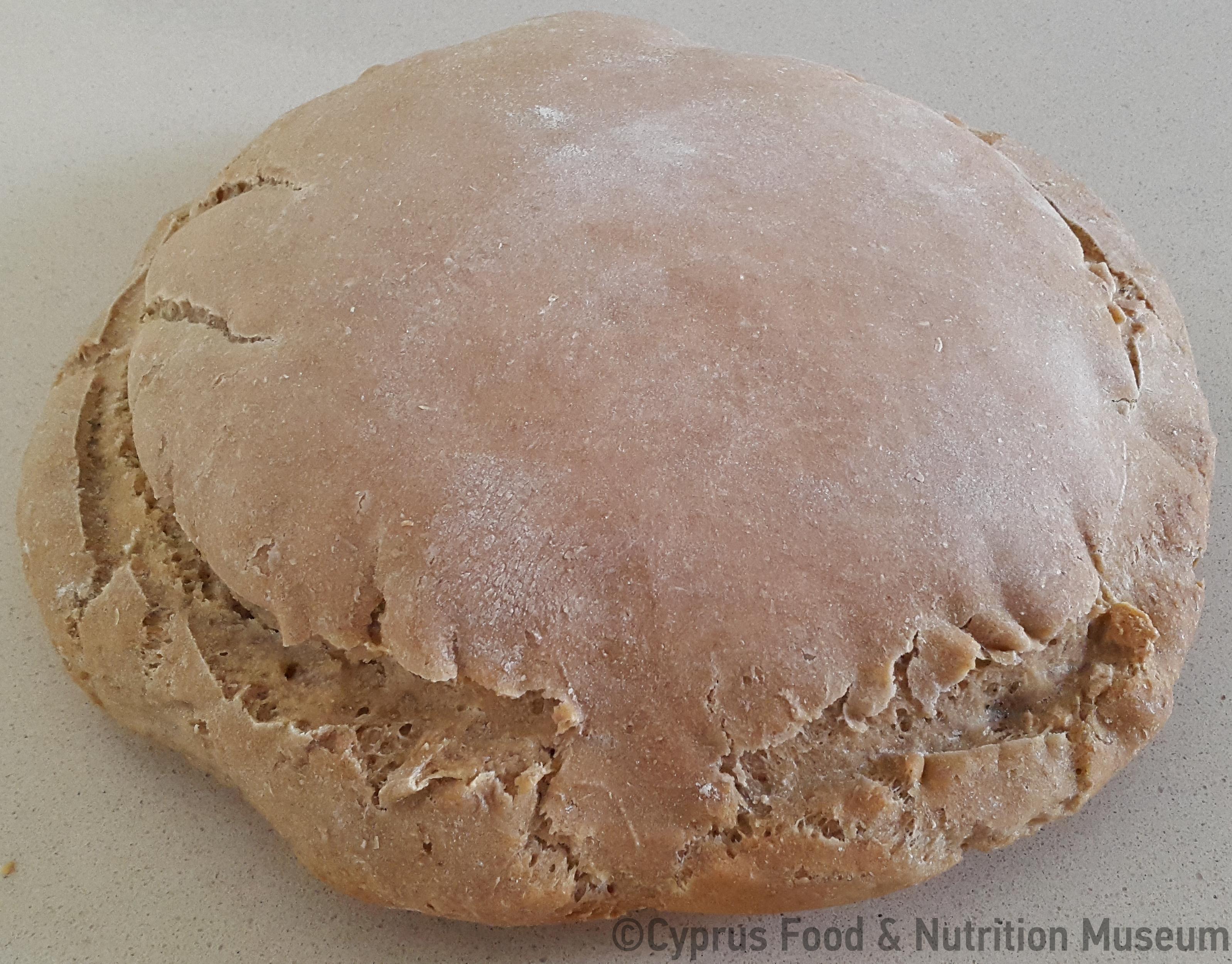Types of wheat bread: wheat bread, bread with semolina, afratítzia, bread with semolina flour, pomágnena, mágnena.
Name - Origin
Ψωμί, άρτος
Types of wheat bread: wheat bread, semolina, afratízia, semolina flour, pomágnena, mágnena
The bread-making process would commence the night before by making sourdough starter where water consecrated on the feast of the Holy Cross or Epiphany was used. Some other methods of making sourdough starter were: using basil leaves, rainwater, bay leaves or lemon juice. Some housewives would make sourdough starter using konstantináto or holy wood from Jerusalem. They would knead old sourdough starter with the appropriate amount of flour in a small trough, cover the dough with clothes and leave it to proof. On the following day, the same process was repeated in a large trough where kneading would take place. After kneading the dough, they would cover it and allow it to rise. They would then cut it in pieces and form the loaves. The loaves were placed in the moulds of a board and carried to the traditional oven which was ready (heated). The loaves were placed in the oven one by one using a fournófkios (a peel). Once the loaves of bread were ready, they would be removed from the oven and placed on a board to cool down and then on a tséstos or tapatz̆iá (a type of wicker trays/baskets) to store them (Kypri, Protopapa, 2003 and Hatzionas, 1971)
Functional and symbolic role
In each household, bread was baked every 10-15 days, as bread was prominent in the Cypriot diet. Stylianos Hatzionas, referring to the diet in the village of Alona, located at the foot of Troodos mountains in the Nicosia district, says that bread would be introduced into the diet of infants immediately after the 5th month of life. It was cut into small pieces for dipping into soups for the infants. Soups with a lot of dipped bread were also consumed by women who were pregnant, as it was believed to promote the production of milk. In Alona, the peasants’ lunch in the fields consisted of bread and olives. The same was true for schoolchildren who would eat dry bread (Hatzionas, 1971).
Bread was an integral part of the soup. In Kythrea of Mesaoria, in order to make the various rice or bulgur soups more palatable, they would combine them with koukkouroúthkia, i.e. bread crumbs fried in olive oil and added to a soup (Prodromou, 1982).
In many villages, such as in Skylloura of Tillyria, in Lapithos, in Lythrodontas and others, a piece of bread or wheat was placed near a newborn baby to protect it from evil. The tradition was followed for 40 days (that is, until the infant would attend its first church service), since the first days were regarded as the most dangerous for an infant (Kypri, Protopapa, 2003 and Deuteraios, 1978).
Moreover, pregnant women in Cyprus believed that a pregnant woman would have difficulty giving birth if the breadboard would be placed upside down by mistake. A woman who had just given birth, had a piece of bread next to her in bed that would protect her from harm (Kypri, Protopapa, 2003 and Deuteraios, 1978). Additionally, on the day when a new mother would get out of bed, a midwife holding a cross would throw pieces of bread in all corners of the house to remove evil; this ceremony was called stavrósima, and bread was believed to have the power to remove evil spirits from the house (Devteraios, 1978).
In the village of Peristerona, in the Paphos district, a loaf of bread was placed under a new mother’s armpit during the first time of breastfeeding of her infant, as they believed that the bread would help her not to lose her milk (Devteraios, 1978).
Bread had also a prominent role during a funeral, as it was served as consolation. In old times, in the villages of Acheritou and Pyrga in Famagusta district, this bread was baked during the night, as it was believed that the darkness of the night was related to evil spirits (Devteraios, 1978)
A woman from Mesana, in the Paphos district, reports that women would bake five batches of bread for a wedding, with the assistance of relatives and friends. Wheat flour was used for Christmas and Easter bread preparations (Kypri, Protopapa, 2003).
Mothers in Cyprus used to believe that bread would bring good luck to their child (Devteraios, 1978)
Additional information and bibliography
E. Pesaro stated that the bread of Famagusta is the best he has ever tried, although very expensive, while Possot wrote in 1532 that Cyprus had good quality wheat and, therefore, had sweet and extremely tasty bread (Marangou, Loizou, 1985), while Ipponax described the wheat of Amathoussa and the Cypriot bread as brilliant (Sakellariou, 1855)
Hatzionas S. (1971) Το φαγητό στην Άλωνα. ΛαογραφικήΚύπρος ,1 (3), σελ.118-121.
Kypri TD, Protopapa KA. (2003) Παραδοσιακά ζυμώματα της Κύπρου, Publications of the Scientific Research Centre XVIII, Nicosia.
Prodromou A. (1982) Παρασκευάσματα από σιτάρι. Λαογραφική Κύπρος, 12 (32), σελ. 133-135.
Devteraios AN. (1978) Ο άρτος κατά τη γέννησιν και τηντελευτήν. National and Kapodistrian University of Athens, School of Philosophy; thesis. Athens.
Sakellariou A (1855) Τα Κυπριακά τόμος 1. IO Angelopoulos Publications, Athens.
Marangou A, Loizou L. (1985) Η ζωή στην Κύπρο στα χρόνια της Φραγκοκρατίας και της Βενετοκρατίας (1191-1571). Publications of the Municipality of Nicosia, pp. 50-140
Demetra Demetriou, Stalo Lazarou
